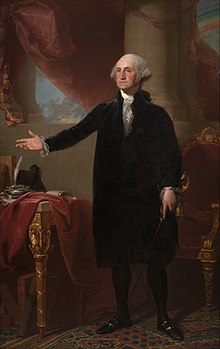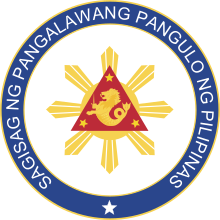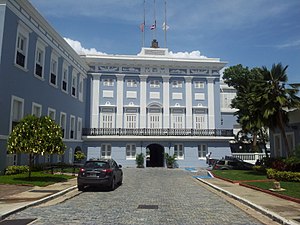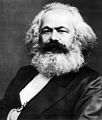| Main | Topics and categories | Tasks and projects |
The Politics portal
Politics (from Ancient Greek πολιτικά (politiká) 'affairs of the cities') is the set of activities that are associated with making decisions in groups, or other forms of power relations among individuals, such as the distribution of resources or status. The branch of social science that studies politics and government is referred to as political science.
It may be used positively in the context of a "political solution" which is compromising and non-violent, or descriptively as "the art or science of government", but also often carries a negative connotation. The concept has been defined in various ways, and different approaches have fundamentally differing views on whether it should be used extensively or in a limited way, empirically or normatively, and on whether conflict or co-operation is more essential to it.
A variety of methods are deployed in politics, which include promoting one's own political views among people, negotiation with other political subjects, making laws, and exercising internal and external force, including warfare against adversaries. Politics is exercised on a wide range of social levels, from clans and tribes of traditional societies, through modern local governments, companies and institutions up to sovereign states, to the international level.
In modern nation states, people often form political parties to represent their ideas. Members of a party often agree to take the same position on many issues and agree to support the same changes to law and the same leaders. An election is usually a competition between different parties.
A political system is a framework which defines acceptable political methods within a society. The history of political thought can be traced back to early antiquity, with seminal works such as Plato's Republic, Aristotle's Politics, Confucius's political manuscripts and Chanakya's Arthashastra. ( Full article...)
Selected article
The Scottish Parliament is the national unicameral legislature of Scotland, located in the Holyrood area of Edinburgh. The Parliament is a democratically elected body with 129 members who are known as Members of the Scottish Parliament (MSPs). Members are elected for four year terms under the proportional representation system. The original Parliament of Scotland was the national legislature of the independent Kingdom of Scotland and existed from the early thirteenth century until the Kingdom of Scotland merged with the Kingdom of England under the Acts of Union 1707 to form the Kingdom of Great Britain. Following a referendum in 1997 where the Scottish people gave their consent, the current Parliament was established by the Scotland Act 1998 which sets out its powers as a devolved legislature. The Act delineated the areas in which it can make laws by explicitly specifying powers that are " reserved" to the Parliament of the United Kingdom. All matters that are not explicitly reserved are automatically the responsibility of the Scottish Parliament. The UK Parliament retains the ability to amend the terms of reference of the Scottish Parliament, and can extend or reduce the areas in which it can make laws. The first meeting of the new Parliament took place on 12 May 1999.
Featured picture
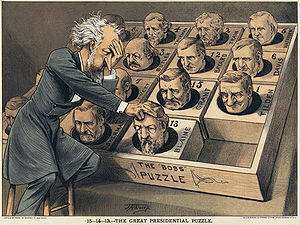
An 1880 political cartoon depicts Senator Roscoe Conkling over a "presidential puzzle" consisting of some of the potential Republican nominees as pieces of a newly invented sliding puzzle. Conkling held significant influence over the party during the 1880 Republican National Convention and attempted to use that to nominate Ulysses S. Grant, only to lose out to " dark horse" candidate James A. Garfield.
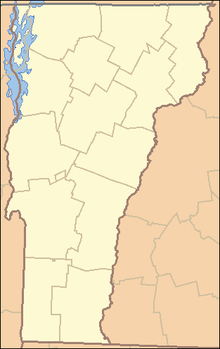
There are fourteen counties in the U.S. state of Vermont. These counties together contain 255 political units, or places, including 237 towns, 10 cities, 5 unincorporated areas, and 4 gores. Each county has a county seat, often referred to as a "shire town."
In 1779, Vermont had two counties. The western side of the state was Bennington County and the eastern was Cumberland County. In 1781, three new counties (including then-called Washington that became part of New Hampshire) were created out of Cumberland County, and the remainder of the county was renamed Windham.
Today's Washington County was created in 1810 as Jefferson County; it was renamed Washington in 1814. ( Full article...)
The current Swiss Federal Councillors are: Guy Parmelin (first elected in 2015), Ignazio Cassis (first elected in 2017), Viola Amherd (first elected in 2018), Karin Keller-Sutter (first elected in 2018), Albert Rösti (first elected in 2022), Élisabeth Baume-Schneider (first elected in 2022), and Beat Jans (first elected in 2023) ( Full article...)

The prime minister of Pakistan ( Urdu: وزير اعظم, romanized: Wazīr ē Aʿẓam, lit. ' Grand Vizier', Urdu pronunciation: [ʋəˈziːɾˌeː ˈɑː.zəm]) is the popularly elected politician who is the chief executive of the Government of Pakistan. The prime minister is vested with the responsibility of running the administration through his appointed federal cabinet, formulating national policies to ensure the safeguard of the interests of the nation and its people through the Council of Common Interests as well as making the decision to call nationwide general elections for the bicameral Parliament of Pakistan.
Since 1947, Pakistan has had 20 prime ministers, aside from the appointed caretaker prime ministers who were only mandated to oversee the system until the election process was finished. In Pakistan's parliamentary system, the prime minister is sworn in by the president and usually is the chairman or the president of the party or coalition that has a majority in the National Assembly– the lower house of Pakistan Parliament. ( Full article...)
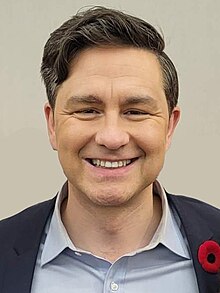
The leader of the Official Opposition ( French: chef de l'Opposition officielle), formally known as the leader of His Majesty's Loyal Opposition (French: chef de la loyale opposition de Sa Majesté), is the politician who leads the Official Opposition in Canada, typically the leader of the party possessing the most seats in the House of Commons that is not the governing party or part of the governing coalition.
Pierre Poilievre has been the leader of the Opposition since September 10, 2022, when he was elected leader of the Conservative Party of Canada, following the 2022 leadership election. He succeeded Candice Bergen, who had served as the party's interim leader from February 2, 2022. She had succeeded former permanent leader Erin O'Toole when the party declared non-confidence in his leadership. ( Full article...)
The governor of Connecticut is the head of government of Connecticut, and the commander-in-chief of the state's military forces. The governor has a duty to enforce state laws, and the power to either approve or veto bills passed by the Connecticut General Assembly and to convene the legislature. Unusual among governors, the governor of Connecticut has no power to pardon. The governor of Connecticut is automatically a member of the state's Bonding Commission. He is an ex-officio member of the board of trustees of the University of Connecticut and Yale University.
There have been 69 post-Revolution governors of the state, serving 73 distinct spans in office. Four have served non-consecutive terms: Henry W. Edwards, James E. English, Marshall Jewell, and Raymond E. Baldwin. The longest terms in office were in the state's early years, when four governors were elected to nine or more one-year terms. The longest was that of the first governor, Jonathan Trumbull, who served over 14 years, but 7 of those as colonial governor; the longest-serving state governor — with no other position included in the term — was his son, Jonathan Trumbull Jr., who served over 11 years. The shortest term was that of Hiram Bingham III, who served only one day before resigning to take an elected seat in the United States Senate. Additionally, Lowell Weicker is noted for a rare third party win in American politics, having been elected to a term in 1990 representing A Connecticut Party. ( Full article...)
Throughout its history, presidents have served purposes and effects including providing the NRA greater legitimacy; holders of the office have also intentionally provoked outrage and condemnation. Since the 1990s, some NRA presidents have made controversial statements such as when James W. Porter II referred to Barack Obama, whose administration he perceived as hostile to gun rights, as a "fake president" and when Charlton Heston proclaimed to gun control advocates that they could only have his firearm after taking it " from my cold, dead hands." ( Full article...)
Selected quote
Selected biography
Ramón Emeterio Betances was a Puerto Rican nationalist. He was the primary instigator of the Grito de Lares revolution and, as such, is considered to be the father of the Puerto Rican independence movement. Betances was also the most renowned medical doctor and surgeon of his time in Puerto Rico, and one of its first social hygienists. He had established a successful surgery and ophthalmology practice. Betances was also a diplomat, public health administrator, poet and novelist. He served as representative and contact for Cuba and the Dominican Republic in Paris. A firm believer in Freemasonry, his political and social activism was deeply influenced by the group's philosophical beliefs. His personal and professional relationships (as well as the organizational structure behind the Grito de Lares, an event that, in theory, clashes with traditional Freemason beliefs) were based upon his relationships with Freemasons, their hierarchical structure, rites and signs.
Did you know (auto-generated) -

- ... that a year after becoming the first woman president of the Canadian Political Science Association, Caroline Andrew moderated the first Canadian leaders' debate on women's issues?
- ... that a political action committee paid $132,000 to former First Lady Melania Trump's fashion stylist for strategy consulting?
- ... that political scientist Selwyn Ryan has been called "the author of record for the ... modern political history" of Trinidad and Tobago?
- ... that despite most of the polls and 50 major political writers predicting victory for Thomas E. Dewey, Harry S. Truman won the 1948 presidential election?
- ... that in the 1916 Declaration of Sainte-Adresse Britain, France and Russia committed to securing the political and economic independence of Belgium after the First World War?
- ... that before entering politics, Romina Pérez worked at the Center for Legal Studies and Social Research, which "became a 'nursery' for intellectual and political cadres of the Movement for Socialism"?
More did you know...
- ...that Thutmose I was the first Pharaoh to be buried in the Valley of the Kings?
- ...that, at a congress in May 1921, all Socialist Party of Romania delegates who supported Bolshevik guidelines were arrested 24 hours after a vote on affiliation to the Comintern?
- ...that Ngo Dinh Diem became president of South Vietnam after a fraudulent 1955 election run by his brother Ngo Dinh Nhu, polling 133% of registered voters in Saigon?
- ...that the Brothers Grimm were amongst the Göttingen Seven, university teachers who protested changes to the constitution of the Kingdom of Hanover in 1837?
- ...that the New Zealand McGillicuddy Serious Party wanted to return to a medieval lifestyle and establish a monarchy based on the Scottish Jacobite line?
- ...that the Proletarian Revolutionary Organisation of Nepal proposed a synthesis of Buddhism and Maoism in 1977?
In this month
- June 28, 2004 - Canadian federal elections occur; the Liberal party loses its absolute majority.
News and Current events
- August 11: 4 local government areas in New South Wales, Australia locked down after COVID-19 case
- August 11: Australia: AstraZeneca vaccine access expanded by Victorian government
- August 1: Australia: Victorian lockdown lifted
- July 29: Tunisia's president dismisses prime minister, suspends parliament
- July 25: Australia: Wikinews interviews Reg Kidd, mayor of the City of Orange, about COVID-19 lockdown and local government
- July 23: South Australia enters week-long lockdown to contain COVID-19 Delta variant spread
- July 21: Technological University Dublin senior lecturer Dr Lorcan Sirr speaks to Wikinews on housing market in Ireland
- July 21: Three rural councils in New South Wales, Australia enter 7-day lockdown
- July 21: Australia: Victoria lockdown extended by a week with 85 active cases recorded
- July 15: California governor signs new state budget, eligible Californians to get stimulus payments
Topics and categories
General images
Related portals
Associated Wikimedia
The following Wikimedia Foundation sister projects provide more on this subject:
-
Commons
Free media repository -
Wikibooks
Free textbooks and manuals -
Wikidata
Free knowledge base -
Wikinews
Free-content news -
Wikiquote
Collection of quotations -
Wikisource
Free-content library -
Wikiversity
Free learning tools -
Wiktionary
Dictionary and thesaurus





